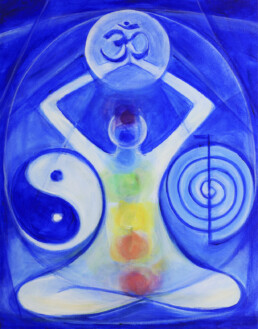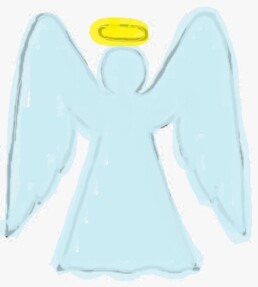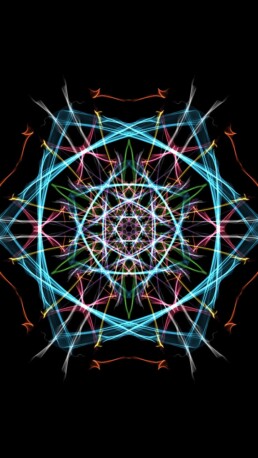My life is giving birth to me
Being born is not a comfortable process. I often feel that my life is "giving birth" to me. This is a metaphor that often comes to mind when I'm working with my clients in my therapy practice in Bryn Mawr.
There are moments of comfort, certainly. But there are unavoidable moments of painful growth, when I am squeezed and pushed and molded into something new. Painful experience seems to be part of the human condition. We are told that humanity as a whole is progressing under the 4th Ray of Divinity, the Ray of harmony through conflict. That theory is hard to argue with.
Our painful experiences, though, are turning us into something more useful and pure. Pain is the heat applied in the crucible of our existence. When we hold this in our minds, it makes the pain a little easier to bear. When we are able to detach a little from the pain, we can navigate it a little better. One way I've found to be a little more detached is to remember that each of us is made up of many parts, physical, emotional, mental, and spiritual.
Our bodies are made up of 50 trillion cells, and each of those cells is a little unit of consciousness. Bruce Lipton, in the fabulous Biology of Belief, describes the movement of cells in a lab setting: In a Petri dish, human cells will move toward a sugar source and away from a poison. They have consciousness, of course on a different scale than ours, but consciousness nonetheless. Imagine how they respond to the thoughts we send to them…imagine how they will respond to kinder thoughts.
Our emotions exist on a different level of consciousness than our bodies or our minds. Emotions use different brain structure than thoughts. The limbic system is the emotional brain and the cortex is the "thinking" brain. The limbic system sends more signals up to the cortex than the other way around, which helps explain why emotions can sometimes overwhelm reason. Luckily we can learn to take a more detached position, and when we do, we begin to notice the flow of emotions. We still experience them, but without drowning in them.
Our thoughts are different from our feelings. Our thoughts sometimes run away with us, but with practice we learn to control them. The first step to this control is to witness them. We notice them arise and float away, and begin to realize that we have thoughts, but we are not our thoughts. We have been told that with our thoughts we create the world. As I look back on my own life experiences, it seems that there is some truth to this. But often we create by accident or default because we create the things we are afraid of. With practice we can learn to use our thoughts to create the things that are for our higher good.
The highest level of being that most of us are able to access at times is the level of our Soul, which is who we really are. Instead of identifying with the passing pleasure and pain of our 3-D physical world, we are learning to identify with a higher purpose, a higher level of consciousness. When we contact our soul, we experience pure joy, gratitude, and peace. We become more intuitive and less critical, and realize that when one member of our human family is suffering, we all suffer. We come to understand that we are more than what meets the eye.
I think that is the purpose of our suffering: To teach us to shift our focus upward. Painful experience shows us that we are placing our attention on the temporary and transient rather than the real and transcendent. Holding on to this idea has helped me to witness my suffering on one level, even as I participate in it on another. This eases the pain and opens me up to pure joy. And that is pretty fantastic!
My typo as a metaphor, and it's OK to ask for help
I sent an email newsletter last week and it had a big mistake in it. The second paragraph makes no sense. It says: "Have you ever considered that what we do that with our spaces, we can do that with our energy fields?"
I knew what I meant.
I usually have a second set of eyes proofread for me, but this time I was late getting it sent and was impatient. I read it several times, and read it out loud. Reading my writing aloud is a good way to make sure it makes sense. But this time it didn't work.
The problem was that I knew what I meant to say, so I didn't notice what I actually typed. Knid of lkie you can udnresantd waht tihs syas.
I should have used my proofreader.
Which brings me to the point: We should always use our team!
Humans are social creatures. When we tell ourselves, very stubbornly, "I can do it all by myself" we are likely mistaken. The stubbornness itself is probably a sign that we are mistaken.
Of course there are lots of things we are supposed to do alone, but in the bigger scale, "no man is an island unto himself". We humans thrive in relationships. We are happy in community. We gravitate to groups, try to find our tribe, we work out our issues in relationship with others.
When my little sister was in a high chair and just learning to talk, she wanted to do everything all by herself. One night we were having stir-fry with soy sauce, she was at that age of budding independence and wanted to pour it "all by herself". The over-sauced food made her shudder.
This is what happens to us even as adults when we stubbornly, and I dare say immaturely, decide that we can do "it" ―anything, everything―all by ourselves. We shudder as we learn the hard lessons of ego, and come to realize the beautiful reality of interdependence.
I see many brave and strong clients who mistakenly believe that asking for help in time of crisis is a sign of weakness. I have done this too, but I try to remember what I remind my clients.
Getting help is not a sign of weakness: It is a sign of humanity. Sometimes we find that the best thing we can do is to ask for help, to let others in. When we deny ourselves the help, and deny others the opportunity to be of service, we throw things out of balance.
Sometimes we give, and sometimes we take. Sometimes we lead, and sometimes we follow. But we never travel alone. And when we forget that, we have forgotten the very thing that makes us human.
The Chakras: Foundations of Health
You know you are more than your body, that you are an energy being, timeless and expansive. How does that energy become the "we" that we see? Part of the explanation comes from an understanding of the energy body. Basically, our physical bodies are the concrete reservoir of energy pouring into us from the biofield, the energy body that surrounds and interpenetrates us. Within that biofield are seven major (and many minor) energy centers, or chakras. This blog provides an introduction to the chakras, or the seven major energy centers within a human body.
Chakra is the Sanskrit word for "wheel" and the name is apt, because each of these centers spins, allowing energy to flow in and out of our bodies. The energy centers also correspond to a layer of our biofield. And inside our bodies, they correspond to a gland. Moreover, each chakra relates to some basic physical and emotional issues, both positive and negative. In this introduction to the chakras, we will use the terms "energy centers" and "charkas" interchangeably.
Introduction to the chakras
Energy flows into our system from the crown chakra and circulates through all of the other chakras, into the back and out the front. Energy steps down, layer by layer, as it circulates through the biofield or aura. It eventually makes its way into the etheric sheath, the layer of energy that envelops the physical body. From there, it enters the physical body itself.
Energy is everything, and therefore nothing exists in the physical that doesn’t first exist in the etheric or energy body. The health of our body is directly related to the flow of energy through our etheric body, and the health of the etheric body is directly related to the flow of energy through the six other chakras and their respective layers of the aura. Here's a framework to understand how it all works.
The root center.
The first or root chakra corresponds to the etheric sheath. The root chakra is located just below the perineum. It is associated with the adrenal glands, which are the masters of the “fight or flight” response. Root chakra imbalances, then, often involve either chronic stress or "flightiness.” This shows up as a lack of grounding -- aka, a poor functioning of the root center.
The issues typically associated with the root chakra include survival issues and the will to live, inherited beliefs, some sleep problems, and being grounded. Physical issues can include autoimmune disorders, kidney problems, and issues like chronic fatigue. When the root chakra is fully functioning, we are grounded. We feel fully alive and present in our physical plane lives, and have a sense of belonging here on earth.
The sacral center.
The second or sacral chakra is located at the top or the sacrum, about two inches below the navel. This energy center is related to the astral or emotional body, what we often think of as the inner child. The astral body forms the second layer of the aura. The glands associated with the sacral center are the reproductive glands.
Not surprisingly, then, issues associated with the sacral center include sexual issues, emotionalism, relationships, and even money issues. Physical issues related to the sacral center may include certain digestive complaints and issues related to the reproductive system. This center has a lot to do with relationships, as well as harmony or disharmony. When the sacral center is clear and fully functioning, we will experience emotional equilibrium, peaceful relationships, and an end to victim consciousness.
The solar plexus
The third chakra is the solar plexus center. It is located in the area of the diaphragm. This center is related to the ego or lower mental body which forms the third layer of the aura. In terms of the glands, the solar plexus corresponds to the pancreas.
The issues associated with the solar plexus center include judgments and criticisms, separativeness, and an “us vs. them” mentality. Health issues related to solar plexus dysfunction include diabetes and many digestive complaints. The solar plexus is also the seat of stress, and an overactive solar plexus can drain the heart center. Thus, heart issues often involve the solar plexus. When the solar plexus is fully functioning and clear, our little egos are under control and we are aligned with the Higher Self.
The heart center.
The fourth chakra is the heart center and is located right at the middle of the chest. This energy center connects the energy of the fourth layer of the aura. It corresponds to the thymus gland, which is important in regulating immune function. When the heart chakra is open and fully functioning, we are connected to our Higher Self and open to group consciousness. We embrace and live the understanding that what is good for one is good for all.
Low energy in the heart chakra is analogous to an overactive solar plexus: anger, criticism, and separativeness. Physical heart chakra issues can include immune deficiencies as well as heart and lung issues. Opening the heart chakra includes self-forgiveness, self-love, and releasing past hurts. Again, the third and fourth chakras are directly related to one another. An overactive third drains the fourth, and vice versa. Interestingly, some experts say that the next step forward for humanity is in opening the collective heart center. It is interesting to consider what that will mean for us, isn't it?
The throat center.
The fifth chakra or throat center is located at the base of the throat. It is associated with the thyroid gland which runs our metabolism. This chakra is all about communication: speaking our truth, connecting to our Higher Self, and manifesting. The fifth and second chakras are directly related. This seems reasonable when we consider how emotions affect communication! An overactive sacral center (emotional body) drains the throat center (unable to communicate or connect to the Higher Self).
Unsurprisingly, throat center problems arise when it is over-active (angry outbursts, for example) or under-active (unable to speak up for ourselves). Moreover, when we are not clear about what to do or how to move forward, we can guess there is an imbalance in the throat center. Illnesses associated with the throat center include many thyroid issues and some voice problems. When the throat is fully functioning and open, we can effectively and harmlessly speak the truth. Moreover, we connect to our Higher Self and we can create or manifest.
The ajna center, soon to be your third eye.
The sixth chakra is called the ajna center. It is located at the middle of the forehead. It corresponds to the pituitary body, which runs the endocrine system. When this center is fully open, it functions as the Third Eye, opening our awareness to the Buddhic plane, the center of intuition and the sixth layer of the aura.
For now, the ajna center contains the recapitulation of all the energy from the lower centers. In fact, problems with the entire glandular system may stem from problems with the ajna center. Imbalances in the sixth chakra typically happen when we are too much “in our heads”.
The crown center.
Finally, the seventh or crown chakra is located above the top of the head. Energy pours into our system via the crown chakra and circulates through the other chakras. This chakra is associated with the pineal gland and the seventh layer of the aura.
Problems in the head center may lead to migraines. It connects us with the Monad or Spirit and opens us to what is sometimes called "Christ" or "Krishna" consciousness. Sometimes people refer to this as universal consciousness. For most of us, we can only hope to connect to such high vibrations of love and wisdom! In the meantime, the crown center sows energy into our entire system.
Now, what will you do with your introduction to the chakras?
Now that you have this basic understanding of the chakras, what will you do with your knowledge? If you are intrigued, it may be worth studying a little more! ACEP's upcoming Comprehensive Energy Psychology course will provide you with more information to help you deepen your understanding. To understand how to use the chakras for developing your intuition, read Lori Hops’s blog here. If you are still a little skeptical (or know someone who is), read this report on a study focusing on the evidence for the chakras.
Author bio:
Sarah Murphy, LPC, ACP-EFT, is an ACEP Board member and chair of its communications committee. She has a private practice where she specializes in helping people with serious or chronic illness.
How to Commit to Meditate
We know we "should" meditate--tons of physical, emotional, and mental benefits have been documented. We can lower blood pressure and cardiovascular health, improve outcomes for a host of medical treatments, relieve depression and anxiety, improve concentration and mental function, and more and more...but somehow we just can't seem to commit to the practice. Disciplined in so many other areas, why are we blocked from the discipline of meditation? We know we can benefit from as little as 10 minutes. The questions remains: how to commit to meditate?
Our egos like to be busy and they like to be in control. In order to maintain that (illusion of) control, the ego can set up a lot of road blocks to keep us from meditating. Here are some of the common strategies our egos use and some ways to counter them:
- Our egos love to tell us that we are too busy to meditate. Of course that is not true. There is an old saying that goes: "Meditate every day for an hour unless you are too busy. In that case, meditate for two hours." There is a lot of truth to this, but an ego that thinks it is too busy probably won't agree to that! So we can set an expectation that our ego will agree to. We can achieve a lot in just five to ten minutes of meditation, and even the most stubborn egos will have a hard time arguing with that!
- Our egos often tell us that meditation is something specific that we "can't do". The inner dialogue goes something like "Meditation is not thinking; I can't not-think!" or "Meditation is reciting a weird mantra, and I don't want to do that!", or "Meditation means sitting cross-legged, and my legs can't cross like that!", or "Meditation means counting the breath; I'll feel like I'm suffocating!" Meditation can be any of these things and it can be something else. We can do a little research and find a style that seems reasonable to us.
- Sometimes our egos tell us that we can't meditate because we can't stop thinking. When my ego tried that one, I made a deal with it: I sat in meditation but let my mind process its ideas, go through the list of chores, think about the grocery list. This became "thinking time before meditation". I decided to be OK with it, and have come to think of it as a kind of clearing process. Many of my meditation friends do the same thing. As it turns out, our minds come up with some good stuff when we give them the time to process. After the processing time, we can move on to our meditation.
- In other cases, our ego puts us to sleep. When this happens, it is a good idea to make sure we keep our meditation time short and our posture pretty straight and not comfy-cozy. The ego trick of falling asleep is something that patience and persistence will help us through. For me, it was kind of like training my toddlers to not throw tantrums: I didn't cave in to candy in the grocery store, and I didn't give my own ego what it wanted, either―I sat in meditation anyway.
- Our egos can get trapped in other kinds of rigid thinking that keep us from meditating. It is best to meditate first thing in the morning, but I am not a morning person. When I had to wake early and was off to a busy start, I meditated at night instead. Now my schedule has changed so I do my meditation in the morning most of the time.
Meditation should be fun, refreshing, a treat! As we become aware of the good vibes we get when we meditate, those feelings in themselves can become the positive reinforcement that keep us going. Till then, the tricks listed above can help answer that question, how to commit to meditate!
If you have other tips and ideas, or traps that need suggestions, please leave comments below!
Past-life regression and a short reference to getting sick
I have seen and experienced incredible healing through past-life regression therapy over the years―on both sides of the recliner, so to speak. In my therapy practice in Bryn Mawr, I have helped clients resolve longstanding issues through regression therapy. As a client, I have used regression to gain insight and heal the patterns that kept me from thriving and to shine light on things that made no sense from my logical mind's point of view. Regression therapy is one of the very best tools we have for making strides―big strides―in personal growth.
One of my most interesting experiences happened when I was in graduate school. I have not been afraid to speak in front of groups since I was in middle school; in graduate school, I gave many presentations without a hitch. I went on to become a professor at the local community college. I've given talks at corporations, taught yoga classes, led meditations....you get the point. But one time in grad school was very different.
As the final project for my human development class, I had to give a five-minute talk about "anything related to human development". I chose to talk about the chakras. It went well, and I received a high A for my effort. But I felt sick. After class I went to meet my boyfriend at the park so we could run together. When I got to the parking lot, I opened my car door and got sick on the asphalt. So much for our run.
A few days later, I met with my hypnotherapist to figure out what had gone wrong. We did a regression therapy and uncovered a lifetime in which I had been stoned to death for having religious views that differed from the prevailing norm. I think that the lifetime was during the very early Christian era, and that I was a Gnostic Christian. The specifics of the case are interesting but far less important than what happened next. What happened next was the healing.
My hypnotherapist and I did healing on this memory. We connected to the after-death experience to reinforce the knowing that death really isn't bad, and my Higher Self nurtured, loved, and protected that unfortunate me. Eventually that other "me" felt brave and calm and almost regal, and totally unafraid to speak her truth.
And now I'm writing a public blog post about past-lives, hypnotic regression, and metaphysics.
What would you do if you could release a past-life trauma?
Energy Healing
Energy work is gaining popularity. It is a powerful tool for personal growth and healing. Clients are amazed at the transformation they experience in just one session. One client texted me the day after our first energy work session to say, "That was amazing!" Her physical discomfort was gone and she felt emotionally at ease with an objectively difficult situation.
Remember we are energy beings! The physical body is an automaton responding to the energetic input from the etheric levels. The aura is real, and you have probably seen it. Have you ever noticed that white outline around things? Your eyes aren't playing tricks on you, you are seeing energy. This level of the aura contains the template that runs our physical existence.
In the film A Thin Sheet of Reality, from the 2011 World Science Festival, a panel of four physicists (a Nobel Prize winner, and professors--interesting ones!--from MIT, Berkley, and Stanford) explain their theory that our three-dimensional world may be a holographic projection of a two-dimensional template. The theory developed from their research into black holes.
As an energy healer with a penchant for research and scientific investigation, I was so happy to see a scientific explanation of what to me is a very real and very important part of reality. Another constant source of scientific backing for the energy-healing world is Bruce Lipton, author of the Biology of Belief.
Luckily we don't need a PhD in physics or biology to receive the benefits of energy healing. If you would like to experience the peace that comes from releasing energy blocks, whether for physical healing or spiritual growth, please contact me.
The Seven Rays of Divinity: Introduction to the Seven Rays
Part one in a series.
Everything is energy. This piece of metaphysical wisdom has been backed up by science and most of us can accept it as truth. A less-known teaching from the Ageless Wisdom is that there are seven Rays, or types, of energy that vivify everything in creation. As an avid student of esoteric spirituality, particularly the work of Djwhal Khul and Alice Bailey, I have been fascinated by these Seven Rays for more than a decade. The topic is huge and complex in one sense, yet simple from another angle. I'd like to share a little of what I have learned with you. I would ask that in return, you keep an open mind---before and after reading! Try to avoid drawing concrete conclusions from such esoteric teachings. My hope is that you will be captivated by the topic as well, and that our joined thought will open humanity up to a greater understanding of the workings of the Universe.
The Seven Rays originate in a distant place in the universe. They circulate through Sirius and then to the Seven Sisters of the Pleiades. From there they circulate throughout creation, making their way to our solar system. They color, or affect, every living thing, from the sun to a planet to a kingdom in nature on earth to a human being.
Each Ray is characterized by a particular quality or attribute, and the things (everything!) the Rays touch are therefore also characterized by this quality. The Sun is primarily affected by a particular Ray; a different one affects the earth. The mineral, vegetable, animal and human kingdoms are likewise affected by a particular Ray (actually a pair of Rays for each). Human beings are affected by the Rays in five different levels of human experience: on the level of the soul; the personality as a whole; the mind; the emotions; and the physical body.
The Rays are:
- The First Ray of Will or Power.
- The Second Ray of Love-Wisdom.
- The Third Ray of Intelligent Activity.
- The Fourth Ray of Harmony through Conflict.
- The Fifth Ray of Concrete Knowledge and Science.
- The Sixth Ray of Devotion and Idealism.
- The Seventh Ray of Ceremonial Order and Magic.
The first three Rays are known as the Rays of Aspect. They correlate to the three aspects of divinity as understood by Hindus (Shiva, Vishnu, and Brahman) and Christians (Father, Son, Holy Spirit). From another angle, Father Spirit (Ray One) impregnates Mother Matter (Ray Three) and creates consciousness, the Soul (Ray Two). Rays Four through Seven are known as the Rays of Attribute. They are said to be sub-rays of the Third Ray.
In future articles we will explore in greater detail the qualities of each Ray and explore how they affect the earth as well as how they affect each of us individually.
Happy in the New Year!
As you are thinking about your goals for the new Year, have you considered adding “be happy!” to the top of your list? Perhaps you should. There has been a lot of talk about happiness recently, and researchers are finding out about the many benefits to happiness-besides just feeling, well, happy. Happy people are also healthier, more successful, and have better relationships and greater job satisfaction. The pursuit of empty pleasure does not make for a happy life. Happiness comes from a blend of a positive outlook with meaning in life. Here are some mindset changes that can help increase your happiness:
- Adopt a “glass-is-half-full” attitude. There is plenty wrong in the world, for sure, and nobody’s life is easy. But focusing on the negatives breeds discontent. Instead, focus on what is right--and see it grow.
- Don’t compare. No matter how tempting it is when you pass a Ferrari, a mac-fabulous house, or a person with a rockin’ bod, don’t compare your life to anyone else’s. You are on your own journey, learning the things you need to become the person you are becoming. You can’t really know what anyone else is going through but you can be sure of one thing: We all have pain. It’s part of the human experience.
- Be mindful of your words. Words have power and we should use them wisely. Make it a practice to avoid hurtful words. One all-too-popular form of hurtful speech is gossip, which is like a boomerang: you won’t avoid being hurt by it if you engage in it. We can also fall into the trap of hurtful speech during conflict. Instead, use your words carefully and thoughtfully to convey your point of view, but never to hurt another.
- Let others in. Allowing yourself to trust is one of the bravest things you can do, and one of the most rewarding. If it seems scary, consider this: people are basically good. We don’t always behave that way, but most of the time, most of us do pretty well. Besides, as they say, no man is an island. To think that we can do it all on our own is illusion; humans thrive in groups. So get socially engaged, spend time with friends, and allow yourself to love and be loved.
- Give back. There is probably nothing that increases happiness—real happiness, not the “I just got a lollipop” kind of transient happiness—more than giving back. So give back—to the people in your life or to strangers; to animals, to plants, to the earth. Find a cause you enjoy and get involved. Make someone’s day. Make a contribution to the welfare of something beyond yourself. There is absolutely nothing can make you happier.
Loss and love
I recently spent the evening with my sister’s family as they rode the waves of grief. They were reeling from the loss of an entire family of friends, gunned down in an unimaginable act of violent terror. There have been and will be tears of anguish, the constant questioning of why and how this can have happened, and those other questions—How will I go to the park when I’ve always gone there with my best friend? How will I wake up tomorrow and be forced to realize this isn’t a nightmare?
The teenage girl had nicknamed herself “the Moment.” She was unique and happy and comfortable in her own skin. She made people laugh. She loved—she simply loved, because that’s who she was.
In the middle of the night her uncle, fragile before military service and destroyed afterwards, came into her house and gunned down her family, then left to wreak his destruction on others, leaving seven holes in countless hearts.
Some humans are vulnerable to evil.
And yet people are basically, inherently good. The outpouring of concern, of heart-felt compassion and love, has been amazing to witness. When we focus the spotlight of attention on such a tragedy, as happens too often these days, our hearts crack open a little more. We feel each others’ grief.
In the face of heartache and loss, with hearts wide open and in suffocating pain, we have two choices: we can respond by shutting down, by closing off, by building another layer on top of our hearts. Or we can move through the pain, and in the depth of our feeling realize the deep love that binds us all. Our hearts can soften in the crucible of despair and become more pure and beautiful because of it.
The innocents who seem to sacrifice themselves every day in more or less public ways seem to be singing out from the other side: don’t lose faith. We are still here and we still love. Be happy and be kind to one another. And simply love.
With our thoughts we create the world
With our thoughts we create our world. This ancient piece of wisdom, handed down by the Buddha, is making inroads in our culture. Is there any evidence that this is true? If we accept that this is true, what are the implications? Thoughts must be incredibly powerful if they create our world, but they often seem to have a “mind of their own”. How can we correctly handle them?
One of the best examples of evidence of the power of thoughts to affect matter is the water experiments of Dr. Masaru Emoto, made famous by his book Messages from Water. Water crystals energized with the thought of love are beautiful, bright and clear; those exposed to the thought of hate are misshapen and dark. His mold experiment is another fascinating example of the power of thoughts.
The Global Consciousness Project is investigating the impact of our collective attention on the earth’s magnetic field. The researchers involved with the project have installed random number generators in 70 sites around the world. When big news stories captivate our collective attention and emotional response, the numbers become somewhat synchronized. The investigators have calculated one in a trillion odds that this effect is due to chance.
And Bruce Lipton, in his book The Biology of Belief, explains how our cells react to our thoughts and emotional climate. The field of epigenetics shows that it’s not genes per se, but the protein covering the genes—the epi-gene, or “above the gene”—that switches genes on or off. The proteins are affected by the environment, including food and water we ingest, the air we breathe, and the emotions we feel. There is a great video about epigenetics produced by Nova here.
So our thoughts are things, and we use them to create our reality. So what now? It becomes increasingly clear that it is our responsibility to monitor our thoughts, to purify our thoughts and emotions, and to be as clear as possible in order to create the life we want—not just for ourselves but for our world. We accomplish this by first becoming aware of the need and dedicating ourselves to the process. Then tools like meditation, hypnotherapy, and energy psychology allow us to clear long-held thoughts and emotions that separate us from the highest good. We open our hearts through gratitude. We learn to trust the process and begin to realize the results of our efforts.
Together, we can be the change that we wish to see in the world, and then see the world we wish to see.
Photo courtesy of freedigitalphotos.net; "Ecology World" by Danilo Rizutti









